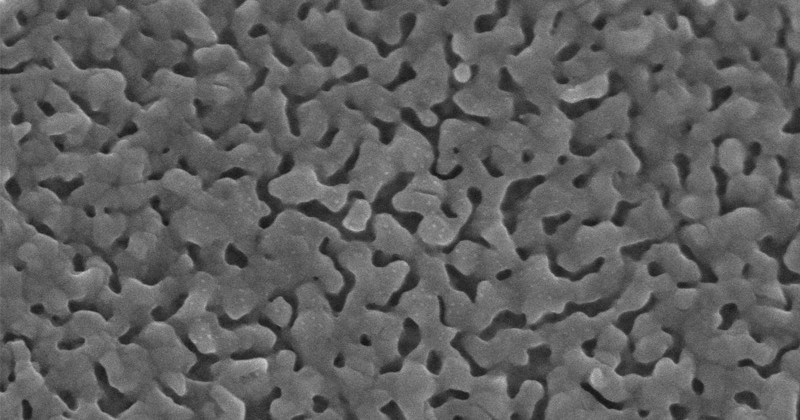Aug 5 2019
An increasing number of researchers are searching for rapid, cost-effective methods to transform carbon dioxide gas into useful chemicals and fuels.
 This special surface of copper and silver is important for achieving the series of chemical reactions in the system the team designed. (Image credit: University of Delaware)
This special surface of copper and silver is important for achieving the series of chemical reactions in the system the team designed. (Image credit: University of Delaware)
An international group of scientists has developed a new method that makes use of a range of catalytic reactions to electrochemically reduce carbon dioxide to methane, the key element in natural gas, skipping an intermediate step generally necessary in the reduction process.
We want to supply renewable electricity and take carbon dioxide from the atmosphere and convert it to something else in one step. This is a key contribution to this vision.
Bingjun Xu, Assistant Professor of Chemical and Biomolecular Engineering, University of Delaware
The outcomes of the study were reported in the journal Nature Communications on July 26th, 2019. Two of the study authors, Xu and postdoctoral associate Xiaoxia Chang, are from UD. Another study author, Qi Lu of Tsinghua University in China, was earlier a postdoctoral associate in the Department of Chemical and Biomolecular Engineering at UD.
The other authors of the paper are Haochen Zhen from Tsinghua University, Jingguang Chen from Columbia University, William Goddard III from the California Institute of Technology, and Mu-Jeng Cheng from National Cheng Kung University in Taiwan.
A One-Pot System
In order to turn carbon dioxide into useful fuels, it is essential to begin with a surface composed of copper, the metal well-known for its use in electrical wiring and pennies.
Copper can be employed to reduce carbon dioxide into carbon monoxide, which can subsequently be further converted into substances like methane. This process is quite simple; however, it needs two reactors and expensive separation and purification steps.
The research group employed computations and experiments to develop a one-pot catalysis system. By adding carbon dioxide, a sequence of chemical reactions will occur without the need to stop and add more chemicals.
The group carried this out by incorporating special nanostructured silver surfaces—which were created by Lu when he was a postdoctoral associate at UD between 2012 and 2015—to the copper surfaces. The silver part pulls carbon monoxide molecules towards it, which subsequently move to the copper part and reduce to methane. The system obtains a higher concentration of methane when compared to copper-only systems.
In this work, the primary novelty is to combine these two in a configuration so that several steps of reaction could occur in one system. We systematically modified the composition, the silver-to-copper ratio in the structure. Those are key to the selectivity and ability to combine the reactions.
Bingjun Xu, Assistant Professor of Chemical and Biomolecular Engineering, University of Delaware
Earlier efforts to integrate copper with precious metal in this manner have not been successful; however, the team created a unique kind of electrode structure that enabled the system. The work was the result of a joint effort with research teams contributing computation, spectroscopy, and studies of the reactivity of materials.